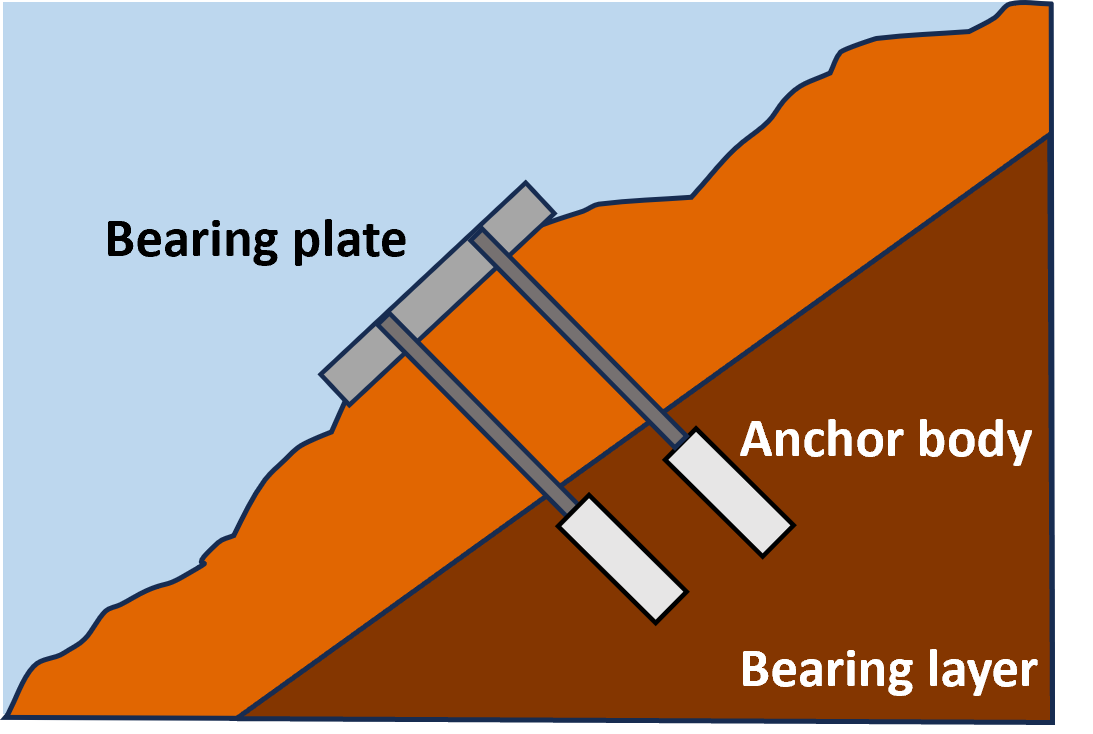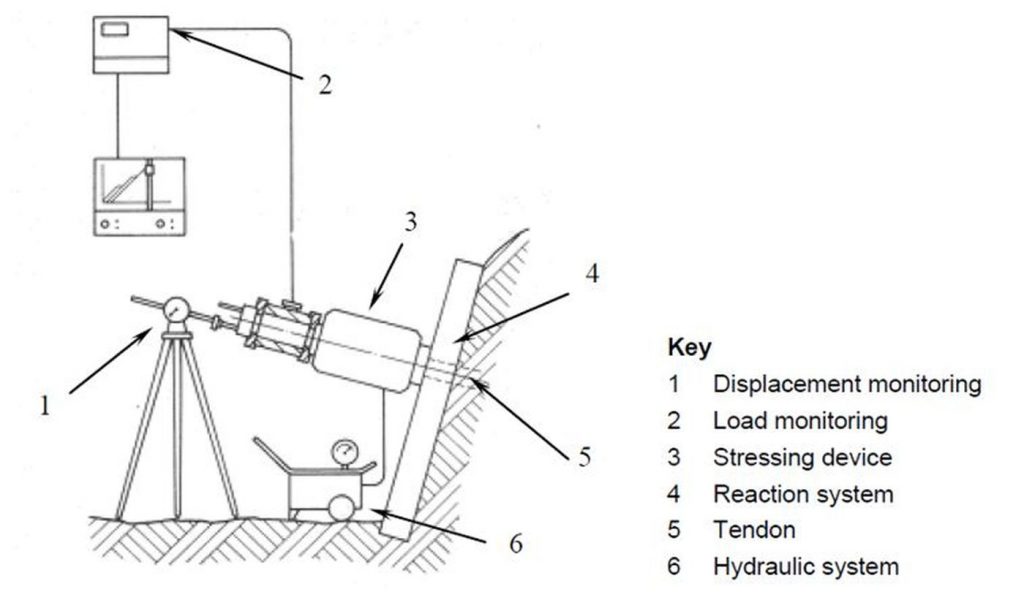Just How Durable Earth Anchors Work: A Comprehensive Guide to Soil Anchoring Solutions
Durable Earth supports play an important role in offering stability and support in various building applications. By installing deeply into the ground, they withstand lateral and upright pressures properly. Various types of anchors accommodate various dirt conditions, making them versatile. Recognizing their auto mechanics and installation techniques is necessary for optimizing performance. What aspects influence their efficiency, and exactly how do they contrast to standard techniques? The solutions may shock you.
Comprehending Durable Earth Anchors
Sturdy Earth anchors function as essential parts in various building and construction and landscape design projects, offering security and assistance in challenging dirt conditions. These supports work by being installed right into the ground, where they stand up to side and upright pressures. Their layout enables protected accessory to structures, ensuring they stay anchored against dirt activity or exterior loads.The effectiveness of durable Earth supports greatly depends on the type of soil and the support's setup depth. Proper installation techniques are important, as they determine the support's holding capability. Ecological elements, such as moisture and freeze-thaw cycles, can also affect performance.These anchors are often made use of in applications ranging from safeguarding fencings and maintaining wall surfaces to supporting momentary frameworks during unfavorable weather problems. Understanding the concepts behind sturdy Earth anchors is necessary for professionals seeking to boost the sturdiness and safety and security of their tasks.
Kinds Of Heavy-Duty Earth Anchors
Various kinds of sturdy Earth supports are designed to satisfy certain requirements based upon soil conditions and project needs. Helical anchors, including screw-like blades, are effective in softer soils, providing high lots capacities and easy setup. Driven anchors, which are inculcated the ground, are suitable for rough surfaces and offer immediate lots support. Tie-back supports are generally used in keeping wall applications, enabling lateral support by securing right into the ground at an angle. Another kind is the cast-in-place support, suitable for concrete applications, as they are incorporated into structures for improved security. Ultimately, soil screw supports are versatile options that can be made use of in numerous dirt types, providing dependable stress and compression capacities. Each kind serves distinctive applications, making sure stability and safety and security in construction and landscaping projects. Understanding these choices permits informed decisions in selecting the proper Earth anchoring option.
The Mechanics of Dirt Anchoring

Comprehending the technicians of soil anchoring calls for an assessment of different kinds of Earth supports and their setup methods. Each anchor kind offers one-of-a-kind characteristics that influence its effectiveness in various dirt conditions. Appropriate setup methods are essential for maximizing the securing system's security and performance.
Sorts Of Earth Anchors
Earth anchors, vital parts in soil anchoring systems, come in numerous types, each developed for details applications and soil problems. One of the most typical kinds include screw supports, which are turned into the ground, supplying strong lateral resistance. Helical supports include blades that permit effective setup in numerous dirt kinds, making them appropriate for both permanent and temporary applications. Driven supports, commonly made from steel, are inculcated the soil and work in rocky or thick environments. Auger anchors make use of a helical style to facilitate installation in softer dirts. Plate anchors consist of a level plate buried horizontally, dispersing load over a bigger area, ideal for applications calling for high lots abilities in cohesive dirts.
Installment Techniques Discussed
Correct installment methods are essential for the performance of soil anchoring systems. The procedure typically starts with website assessment, verifying the chosen place can sustain the support's load. After determining the right support type, correct hole deepness and angle must be established. The setup involves driving the anchor right into the ground using specific equipment, such as hand-operated or hydraulic drivers, to attain best embedment. Post-installation, tensioning the anchor is critical to assure security; this is commonly confirmed with load screening. Additionally, bordering soil problems ought to be kept an eye on to avoid displacement. Following these methods not just enhances the anchor's performance yet also extends its life expectancy, offering reliable support for different applications.
Applications of Heavy-Duty Earth Anchors
While durable Earth supports are often connected with building and construction and landscape design, their convenience reaches a variety of applications throughout different industries. In civil design, they give necessary support for keeping walls, making sure security in locations vulnerable to soil disintegration. The marine industry makes use of these supports for protecting docks and marinas, stopping movement triggered by tides and currents. Additionally, in the telecom sector, sturdy Earth supports are considerable for supporting cell towers and other high frameworks against wind pressures. Agricultural applications additionally profit, as these anchors can secure structures like greenhouses and animals secure fencing, ensuring they endure severe climate condition. Furthermore, in renewable resource jobs, such as wind farms, Earth supports play an important duty in safeguarding wind turbine foundations, improving general security and efficiency. This wide variety of applications highlights the flexibility and integrity of durable Earth anchors throughout different areas.
Advantages Over Conventional Anchoring Methods
Typical anchoring approaches have actually long been relied upon for security, durable Earth supports offer substantial advantages that improve efficiency and effectiveness. One significant benefit is their remarkable load-bearing capability, which permits them to hold up against greater forces without failing. This stamina makes them ideal for demanding applications, such as in building and construction and energy installations.Additionally, heavy-duty Earth supports More about the author are made for deeper setup, giving higher security in numerous soil conditions, consisting of loose or sandy dirts. Their resistance to deterioration and environmental aspects assures a longer lifespan and lowered maintenance expenses contrasted to standard methods.Moreover, these anchors can be installed with very little disruption to the surrounding location, maintaining the honesty of the landscape. Generally, sturdy Earth supports offer a reputable and reliable option for securing needs, exceeding the restrictions commonly connected with standard anchoring methods.
Setup Refine and Finest Practices
The installation procedure for dirt anchoring remedies starts with complete preparation and website analysis to assure peak efficiency. Following this, a detailed installment guide supplies clear directions for efficient application (construction get redirected here site anchors). Complying with these finest methods is vital for accomplishing resilient and trustworthy anchoring outcomes
Preparation and Site Evaluation
Reliable prep work and complete website evaluation are vital actions in the installment of soil anchoring remedies. Before installation, the dirt kind have to be examined to identify its bearing capacity and viability for securing. Performing a geotechnical survey can provide vital info regarding dirt make-up, dampness degrees, and potential ground movement. Additionally, recognizing existing structures, vegetation, and utilities is important to prevent disturbance during installment. The location must be removed of debris and challenges to guarantee safe access for tools. Climate condition ought to also be kept track of, as damaging conditions can impact both security and installment efficacy. By thoroughly preparing the website and examining all pertinent variables, the probability of successful support performance is substantially boosted.
Step-by-Step Installment Guide
A detailed installation procedure is essential for achieving suitable efficiency of soil securing services. The installation starts with choosing the appropriate support type and assuring the website is free from debris. Next off, proper hole placement is established based upon lots needs. When the place is developed, holes are drilled to the specified depth and diameter utilizing the right devices. The anchor is then inserted into the hole, ensuring it is aligned correctly. After securing the anchor, soil is backfilled and compacted to enhance stability. It is vital to adhere to manufacturer guidelines throughout the process. A post-installation inspection confirms that the anchors are adequately positioned and functioning as meant, supplying reputable support for the designated application.

Upkeep and Assessment of Earth Anchors
Regular maintenance and assessment of Earth supports are important for making certain long-lasting performance and stability. Routine checks permit for the very early detection of problems such as rust, loosening, or dirt movement. Assessors need to look for indications of rust or deterioration on the support components, particularly at the connection factors. Furthermore, the bordering dirt needs to be analyzed for disintegration or modifications in dampness web content, which can influence anchor effectiveness.It is suggested to develop a routine examination timetable, preferably at the very least as soon as a year, relying on ecological conditions. During examinations, all noticeable parts should be cleansed to remove dust or particles that can conceal possible issues. Any kind of indicators of distress, such as turning structures or uncommon settling, must trigger instant analysis. Correct documentation of inspections can help in monitoring support performance in time and help with prompt upkeep actions, making sure the supports continue to be useful and trustworthy.
Often Asked Concerns
What Products Are Heavy-Duty Earth Anchors Commonly Made From?
Durable Earth supports are commonly constructed from sturdy materials such as galvanized steel or stainless-steel, guaranteeing toughness and resistance to rust. These products provide durable support and security in various soil conditions and applications.
How Do Dirt Problems Affect Support Performance?
Soil problems substantially affect anchor efficiency. Elements such as dirt kind, dampness content, and compaction impact the anchor's grasp and stability, with cohesive soils frequently offering better resistance than sandy or loosened dirts, affecting total effectiveness.
Can Heavy-Duty Earth Anchors Be Recycled After Elimination?
Heavy-duty Earth anchors can be reused after elimination, given they are checked for damage and wear. Proper cleaning and maintenance improve their durability, making certain reliable performance in subsequent setups when problems permit safe reinstallation.
What Are the Ecological Effects of Making Use Of Earth Anchors?
The environmental impacts of making use of Earth anchors consist of possible dirt disturbance, disruption of local ecological communities, and possible contamination of groundwater. If used properly, their benefits typically surpass these problems, promoting stability in different applications.
Exactly how Do I Choose the Right Support for My Task?
